

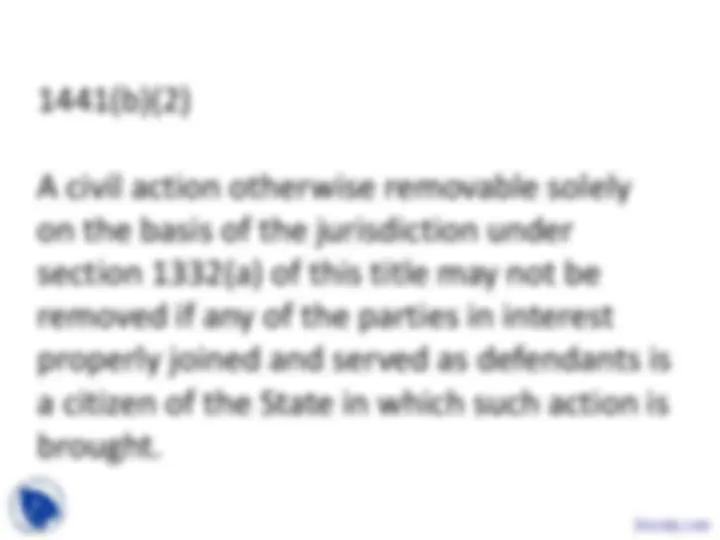
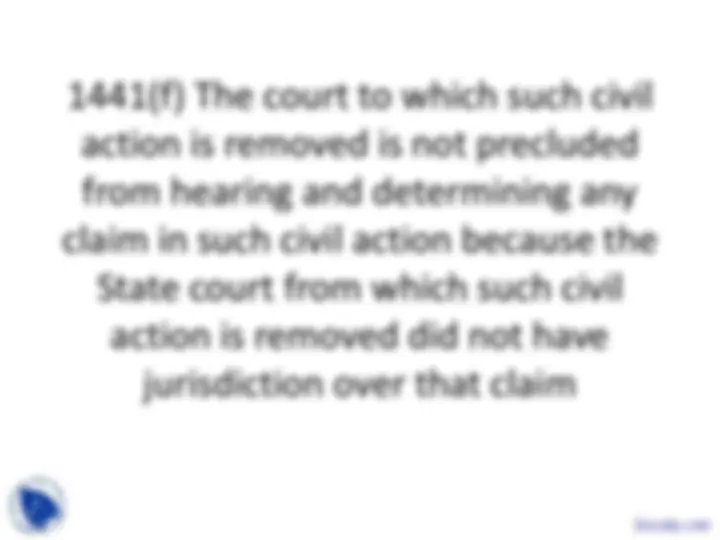
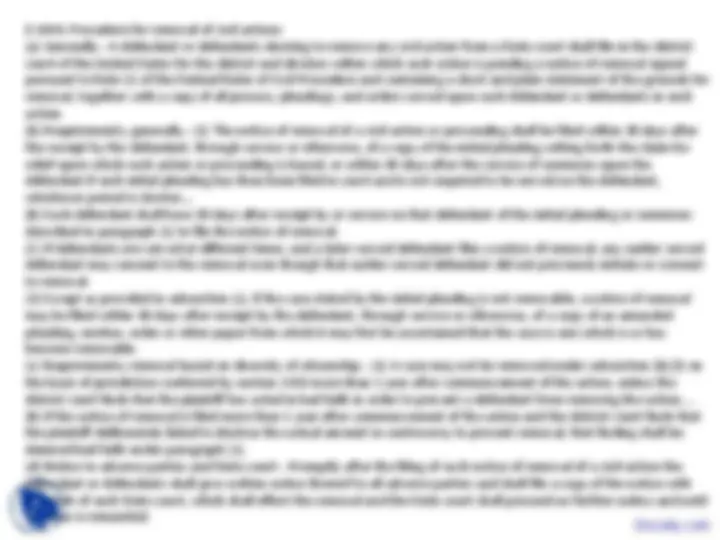
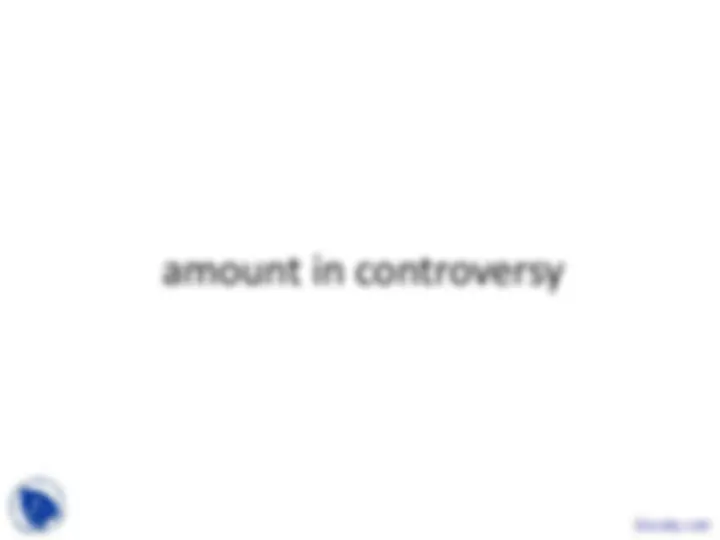
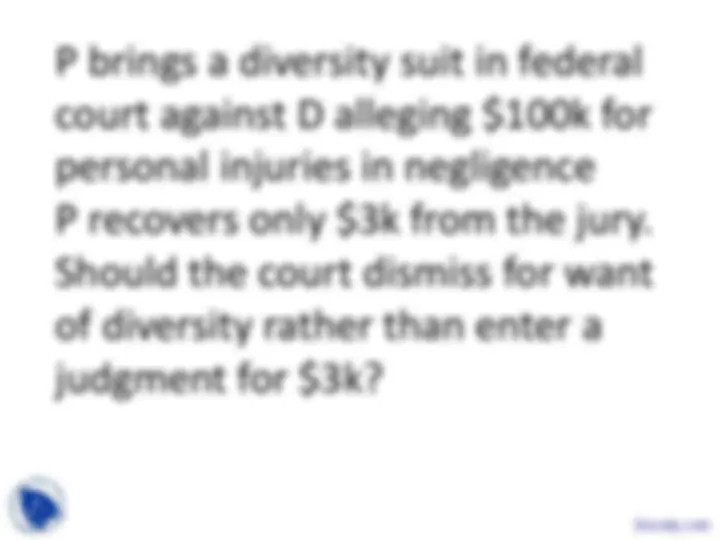

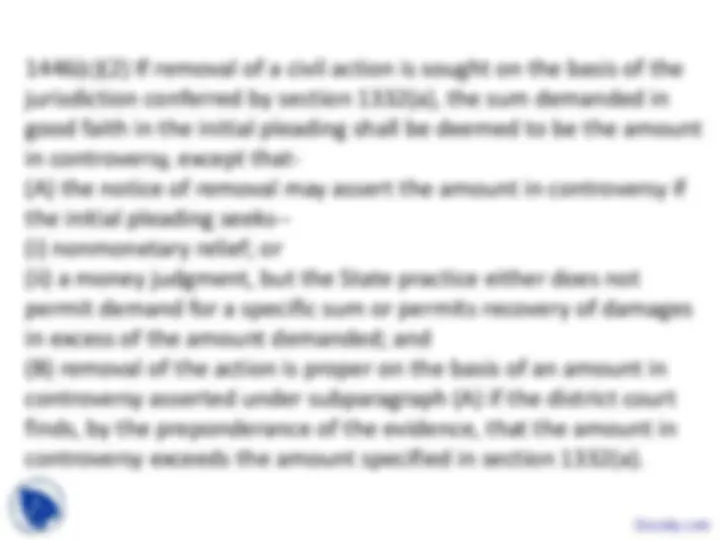

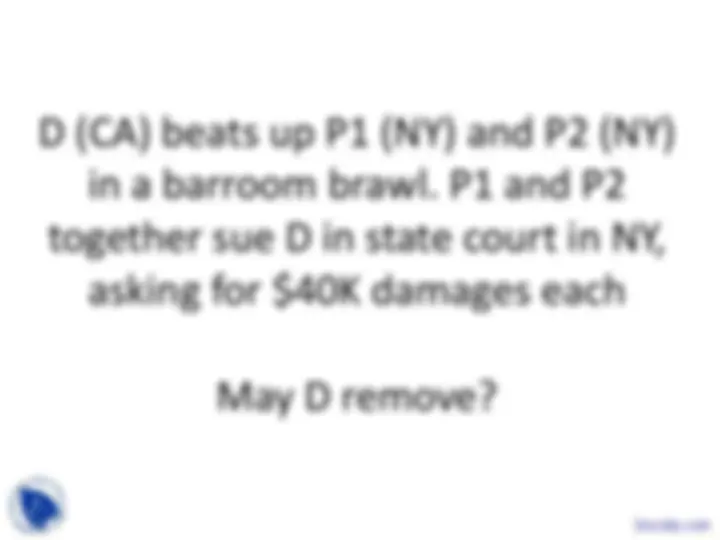
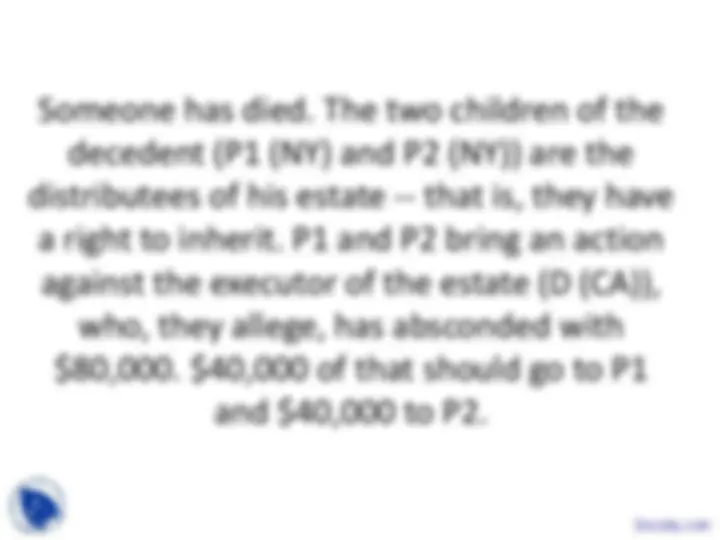
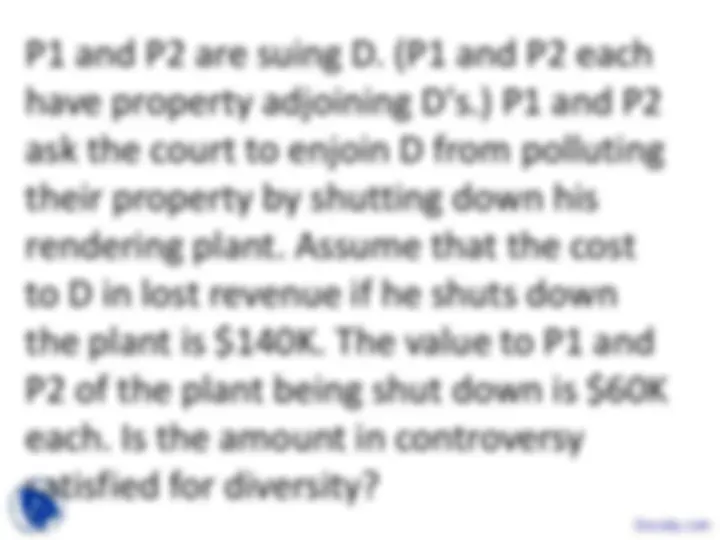
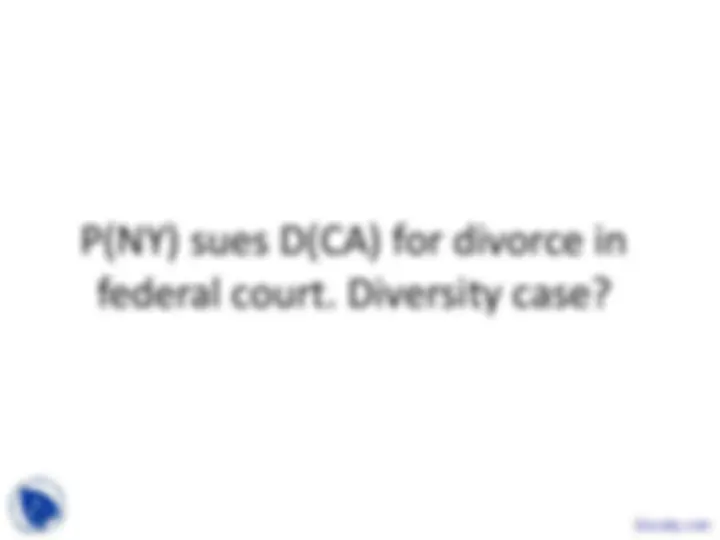

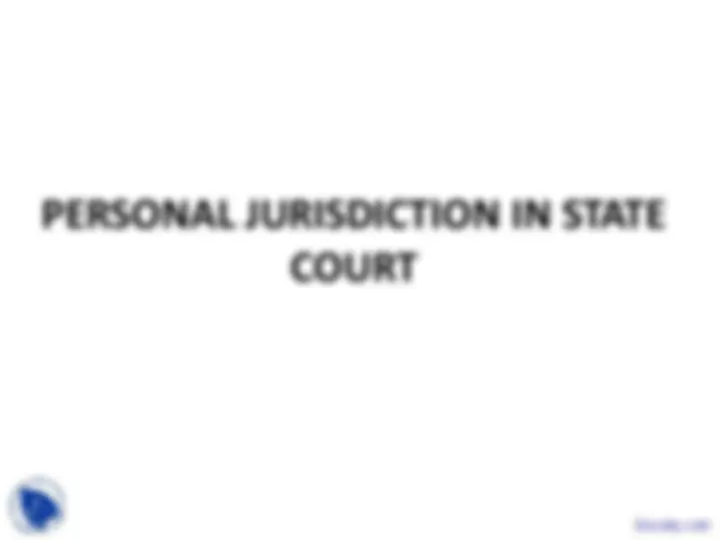

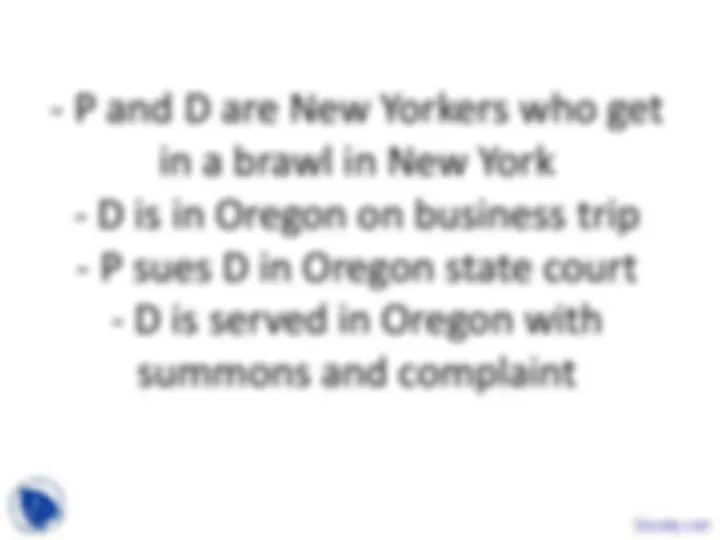
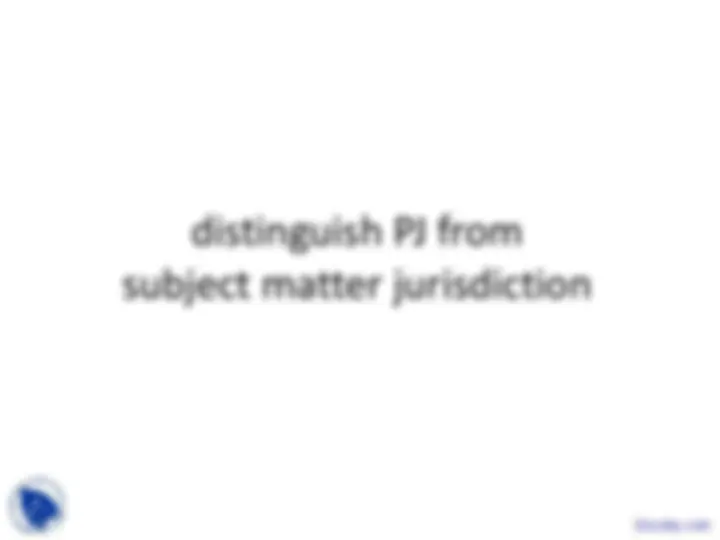

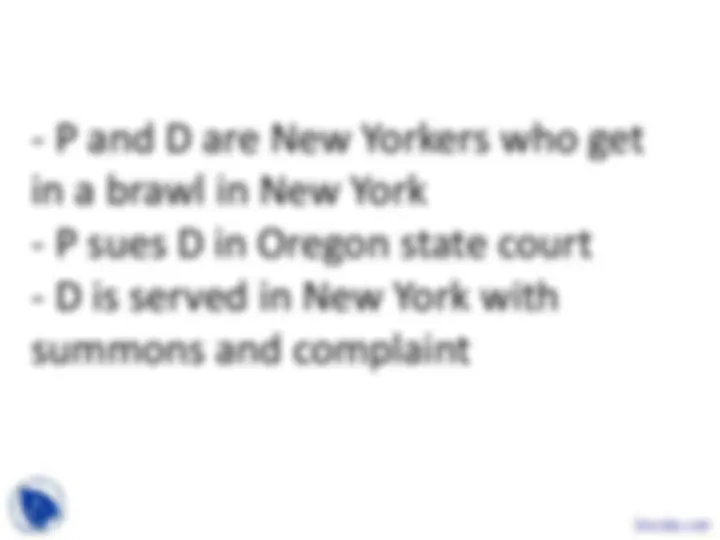

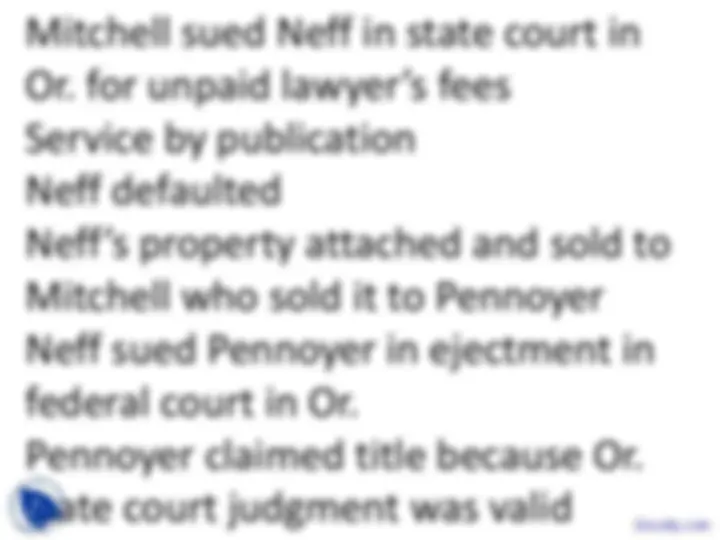
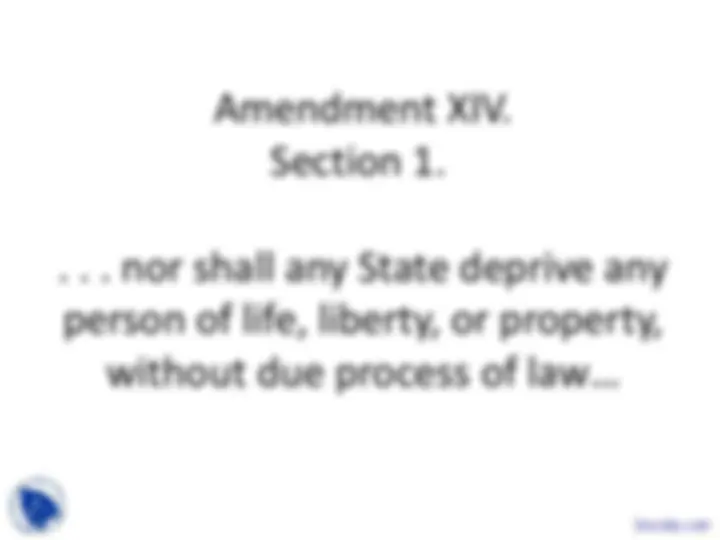



Study with the several resources on Docsity

Earn points by helping other students or get them with a premium plan


Prepare for your exams
Study with the several resources on Docsity

Earn points to download
Earn points by helping other students or get them with a premium plan
Community
Ask the community for help and clear up your study doubts
Discover the best universities in your country according to Docsity users
Free resources
Download our free guides on studying techniques, anxiety management strategies, and thesis advice from Docsity tutors
Information on the removal of civil actions from state courts to federal courts based on jurisdiction and the amount in controversy. It includes sections on the procedure for removal, the requirements for removal based on diversity of citizenship, and the notice to adverse parties and state court. The document also discusses the st. Paul mercury test and aggregation of claims.
Typology: Slides
1 / 32

This page cannot be seen from the preview
Don't miss anything!

























§ 1446. Procedure for removal of civil actions (a) Generally.--A defendant or defendants desiring to remove any civil action from a State court shall file in the district court of the United States for the district and division within which such action is pending a notice of removal signed pursuant to Rule 11 of the Federal Rules of Civil Procedure and containing a short and plain statement of the grounds for removal, together with a copy of all process, pleadings, and orders served upon such defendant or defendants in such action. (b) Requirements; generally.--(1) The notice of removal of a civil action or proceeding shall be filed within 30 days after the receipt by the defendant, through service or otherwise, of a copy of the initial pleading setting forth the claim for relief upon which such action or proceeding is based, or within 30 days after the service of summons upon the defendant if such initial pleading has then been filed in court and is not required to be served on the defendant, whichever period is shorter.… (B) Each defendant shall have 30 days after receipt by or service on that defendant of the initial pleading or summons described in paragraph (1) to file the notice of removal. (C) If defendants are served at different times, and a later-served defendant files a notice of removal, any earlier-served defendant may consent to the removal even though that earlier-served defendant did not previously initiate or consent to removal. (3) Except as provided in subsection (c), if the case stated by the initial pleading is not removable, a notice of removal may be filed within 30 days after receipt by the defendant, through service or otherwise, of a copy of an amended pleading, motion, order or other paper from which it may first be ascertained that the case is one which is or has become removable. (c) Requirements; removal based on diversity of citizenship.--(1) A case may not be removed under subsection (b)(3) on the basis of jurisdiction conferred by section 1332 more than 1 year after commencement of the action, unless the district court finds that the plaintiff has acted in bad faith in order to prevent a defendant from removing the action.... (B) If the notice of removal is filed more than 1 year after commencement of the action and the district court finds that the plaintiff deliberately failed to disclose the actual amount in controversy to prevent removal, that finding shall be deemed bad faith under paragraph (1). (d) Notice to adverse parties and State court.--Promptly after the filing of such notice of removal of a civil action the defendant or defendants shall give written notice thereof to all adverse parties and shall file a copy of the notice with the clerk of such State court, which shall effect the removal and the State court shall proceed no further unless and until the case is remanded.